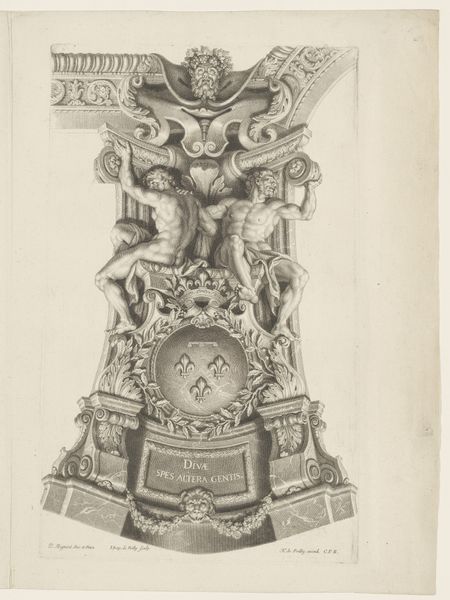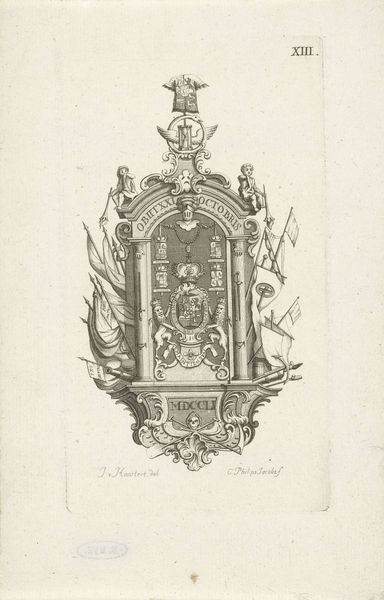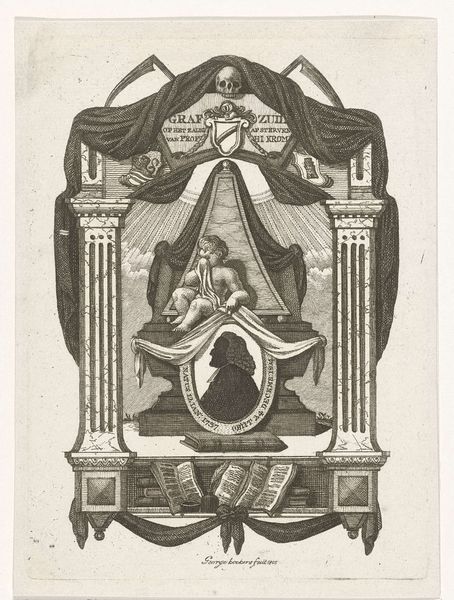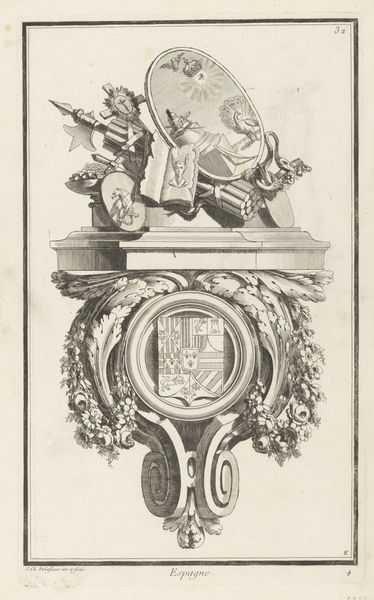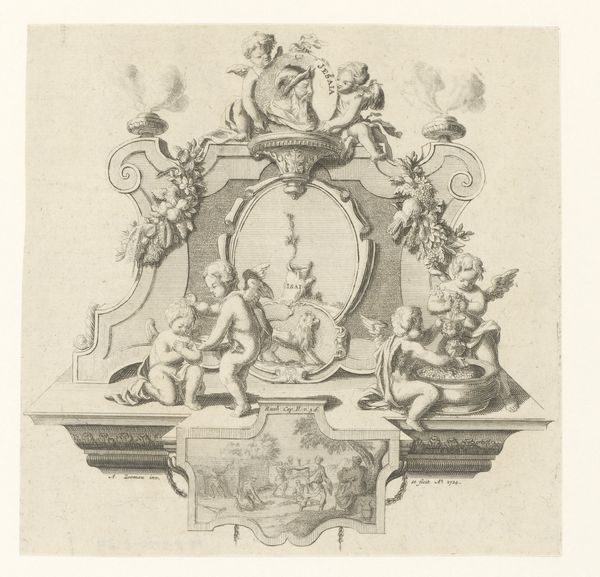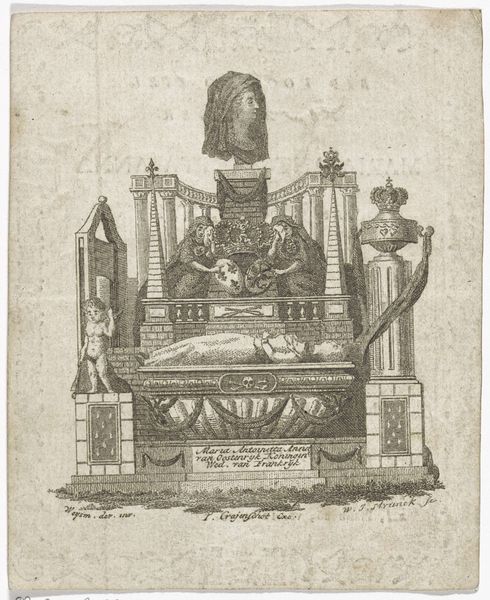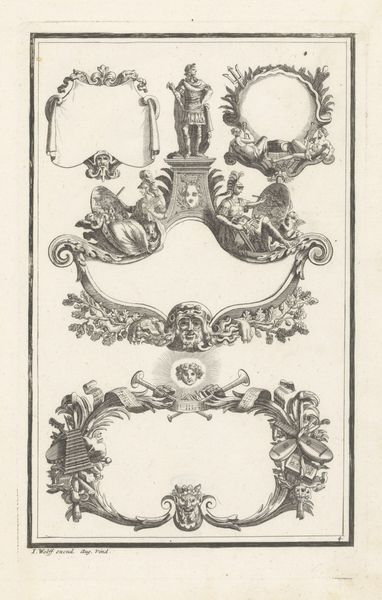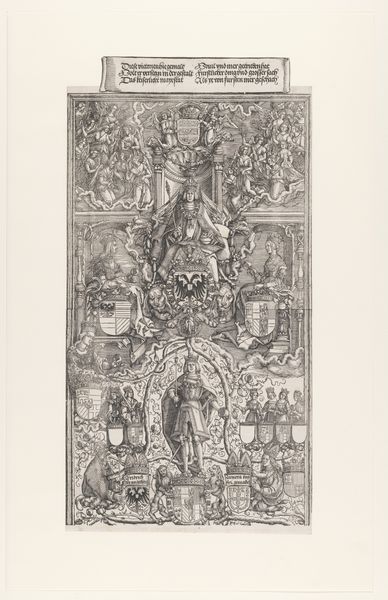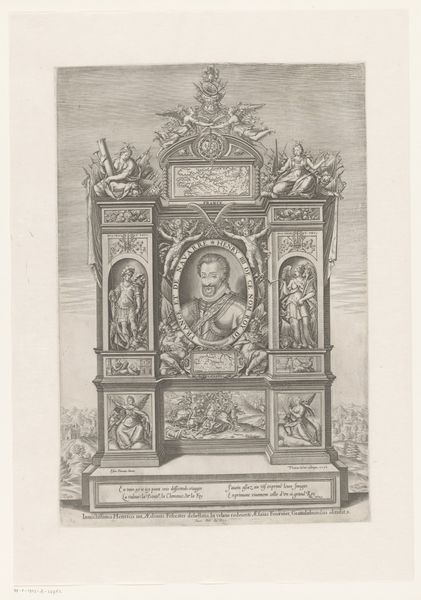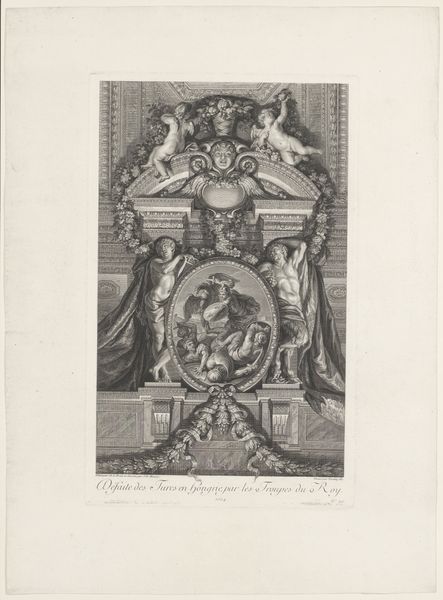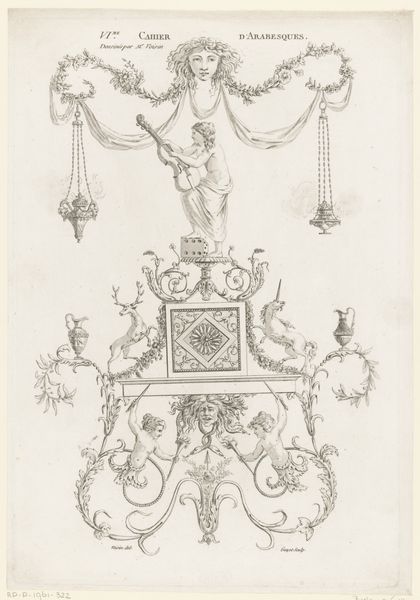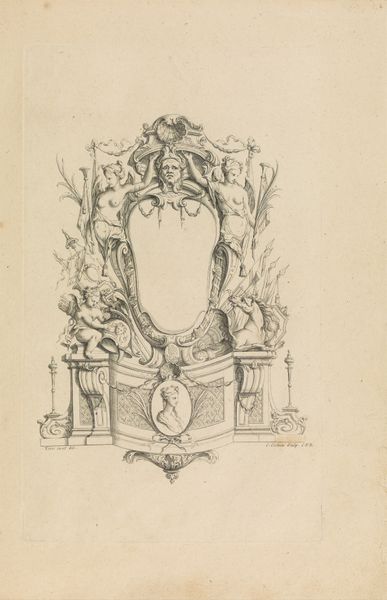
Epitaaf voor de overleden prinses Anna van Hannover, 1759 1752 - 1789
0:00
0:00
casparjacobszphilips
Rijksmuseum
Dimensions: height 174 mm, width 98 mm
Copyright: Rijks Museum: Open Domain
Caspar Jacobsz Philips created this print, "Epitaph for the deceased Princess Anna of Hannover," in 1759. The print functions as a memorial to Anna, yet its visual language tells us much about the prevailing attitudes towards gender, power and death in the 18th century. At the top, we see a skeleton draped in royal robes, a stark reminder of mortality's levelling effect. Below, allegorical figures flank a central crest, representing virtues and territories associated with Anna. These figures, rendered in classical style, idealize the princess. The print is a blend of personal grief and political statement, reflecting the complex role of women in royal families. Anna was valued for her lineage and duty to produce heirs. The epitaph doesn't offer a narrative of Anna’s personal life but immortalizes her through symbols of state and idealized femininity. While it was intended to enshrine her memory, it also exposes the constraints placed upon royal women, whose identities were often subsumed by dynastic expectations.
Comments
No comments
Be the first to comment and join the conversation on the ultimate creative platform.
